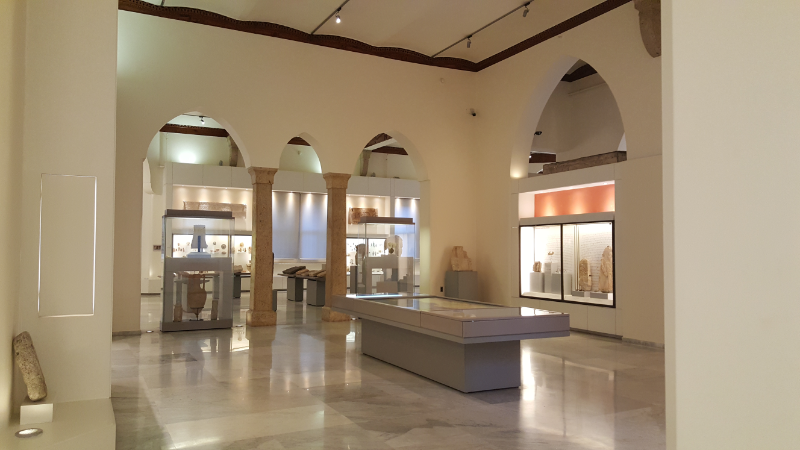Remember when I said that Lebanon is super old? As you might expect from a very old place, there are a lot of museums in Lebanon displaying very old things. I went to two of them, the National Museum of Beirut and the American University of Beirut’s Archaeology Museum. Beyond just museums, there are ruins all over the city (and under the city) and the country. It would be impossible to give you a thorough history of Lebanon, mostly because you would be bored to tears reading it, and I would react similarly to writing it. Instead, I’m going to give you the highlights deemed most interesting by me.
(Disclaimer: as usual, I’m at like 90% confident that what follows is accurate, but I’m not a scholar of ancient history which means that looking at this stuff for too long makes my head hurt. I did my best.)
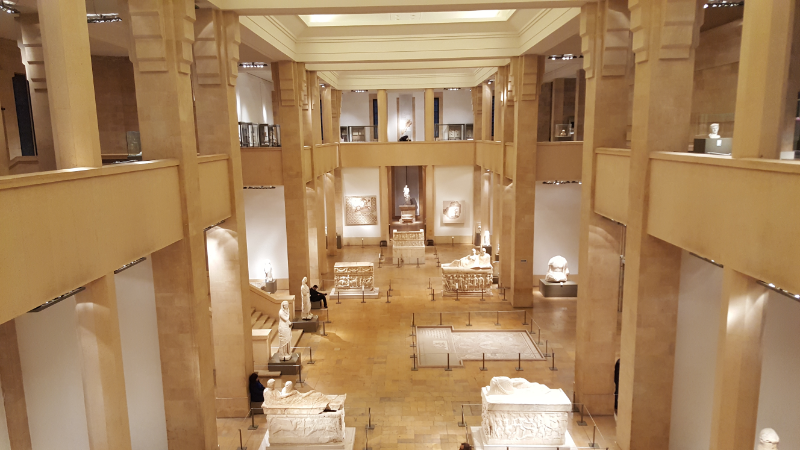
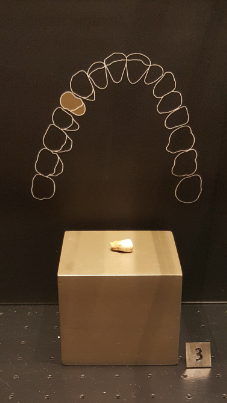
To talk about the first humans in Lebanon, we have to go back… waaaaaay back in history to AT LEAST 48000 BC. Oh yes, that’s right. The National Museum has a molar that has been radiocarbon dated to 250000 – 50000 BP (BP means the number of years before 1950). That, yes, seems like quite the range of dates. I know this is complicated stuff, but you’d think they could come up with a gap of less than 200,000 years. Anyway, that’s beside the point. The point is, even if it’s only from 50000 years before 1950, it’s still ridiculous.
The first permanent settlements are estimated to have emerged by 5000BC. By 4000BC, the land was inhabited by the Canaanites, or Phoenicians. They lived in coastal cities, and the inland was covered in forests. Those cities are still in existence today: Tyre and Sidon were big maritime and trade centers, and Gubla (Byblos) and Berytus (Beirut) were trade and religious centers. The Phoenicians thrived because of their location and many tradable resources. They established a trading relationship with Egypt, bringing in wealth and foreign goods.

In the 1400s BC, Lebanon became part of the Egyptian empire for a couple of centuries. Egypt was just the first in a long line of powerful outsiders to come in and rule over the land. Post-Egyptians, the Phoenicians enjoyed a few centuries of independence, thriving again and mastering the arts of textiles, ivory work, metalwork, and glassmaking. The Phoenician alphabet spread, making it possible for common people to learn to read. Many modern alphabets can be traced back to the Phoenician alphabet. It was during this period that Sidon and Tyre first entered the story in the Bible, when cedar trees and craftsmen were provided to Israel’s King David to build his palace. Later, Jezebel, the queen of Israel who led the Israelites astray by worshipping the Phoenician god Baal, was the daughter of the king of Sidon.
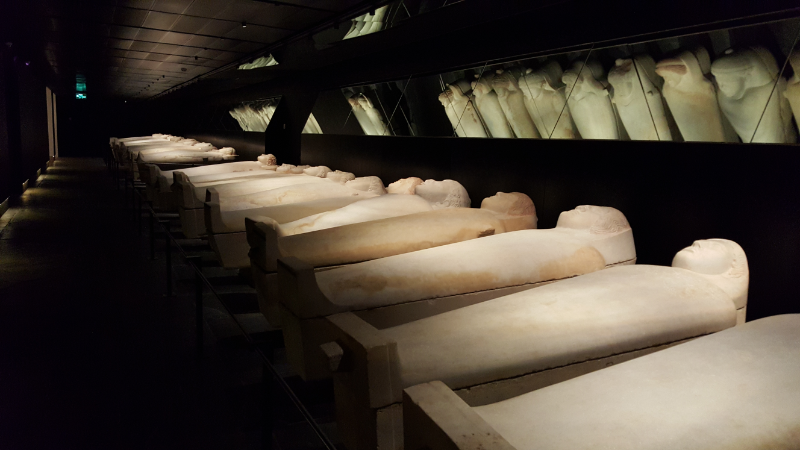
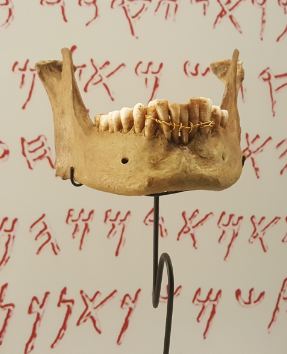
When the Assyrians conquered the Phoenicians in the 9th century BC, they ruled oppressively. Any uprisings were squashed, and the people were punished for their rebellion. The Babylonians were similarly harsh rulers. The Babylonian king Nebuchadnezzar sieged Tyre, an island city, for 13 years before gaining control. This siege is described by the Old Testament prophets Jeremiah and Ezekiel. Next came Persian rule and a period of peace until they started imposing high taxes, and the people rebelled.
When Alexander the Great and the Macedonians came onto the scene in the 300s BC, most cities didn’t resist and instead welcomed them in. Tyre, on the other hand, refused to allow entry into the city. The Macedonians sieged the island for seven months and ended up victorious after constructing a causeway from stones, timber, and dirt that linked the island to the mainland. Without its water defenses, the city fell, and its inhabitants were harshly punished for their resistance. Over time, the causeway widened as more and more sand and debris washed up, and today, Tyre is a peninsula. The fall of Tyre and its failure to ever recover its previous status as a world-wide trading center was described by the prophet Ezekiel.
After Alexander died, his great kingdom fell apart under the conflict-filled rule of his successors. The Romans took over, and Pompey added Lebanon as a Roman province. The inhabitants of its major cities were given Roman citizenship. The language switched from Phoenician to Aramaic. It was a time of economic prosperity.
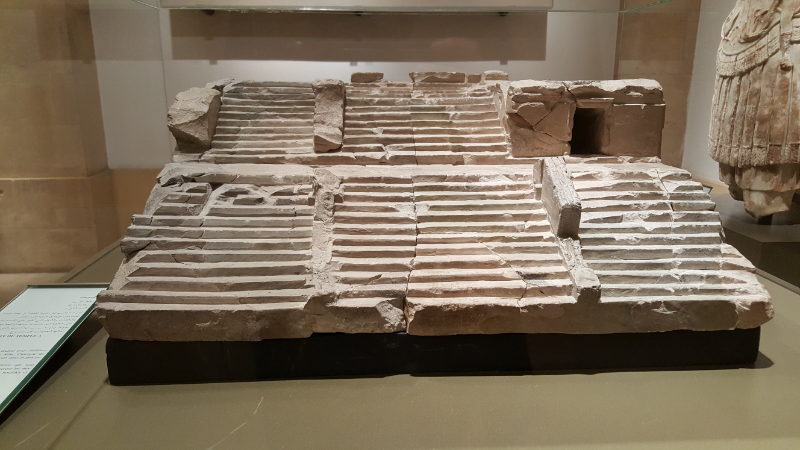
This was also the time period in which Jesus performed his first miracle in Qana, in the south of Lebanon, turning water into wine at a wedding. He visited Tyre and Sidon as part of his ministry. Later, Paul also briefly visited both cities and met with disciples in each. Christianity spread quickly, leading to a Christian majority in the area. The Maronite church emerged at the end of the 4th century from the followers of Saint Maron, a monk.
Natural disaster in the form of earthquakes struck in the 4th and 6th centuries AD. The 4th century earthquakes were accompanied by tidal waves that destroyed the coastal cities. The 6th century’s destroyed Baalbeck (originally a big pilgrimage location for the Phoenician god Baal and later the location of Roman temples) and Beirut, killing thousands. Between these disasters and internal conflicts in the empire, Roman control of the area weakened.
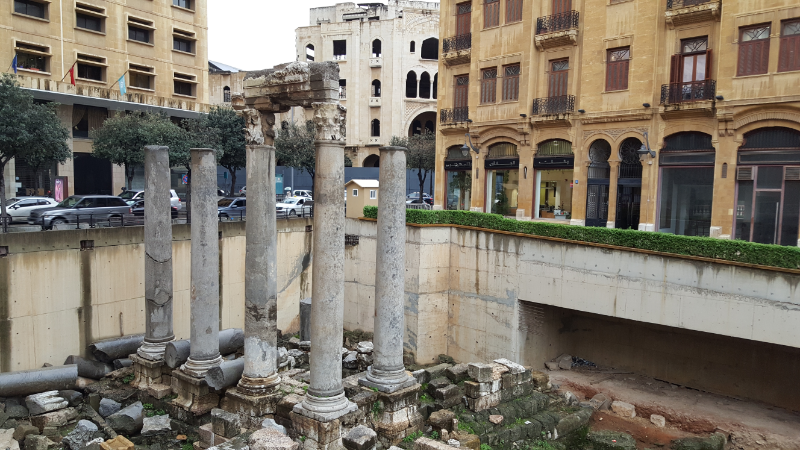
Islam was introduced by the prophet Muhammad at the beginning of the 7th century, and the Muslim Arabs took control from the Romans in the same century. Islam began to spread, and Arabic was introduced as the new language. The Maronite community clung to Christianity and was treated with varying levels of tolerance depending on the ruler at the time. The Druze faith also emerged around the end of the 10th century.
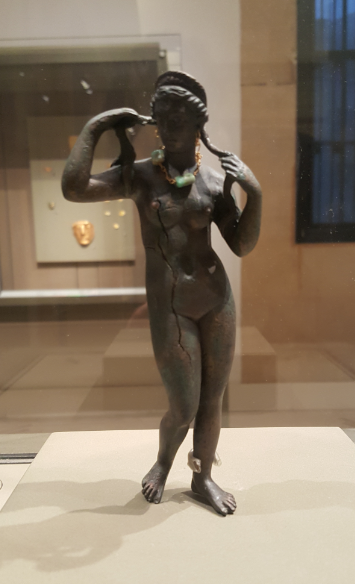
The Crusaders swept in during the 11th century, organized by Western European Christians who were trying to reclaim the Eastern Mediterranean. Lebanon became part of the Crusader states, split between two of them. The Maronites formed a connection with the French and pledged their allegiance to the pope in Rome, rather than to a more local patriarch, bringing them support from both France and Italy.
Muslim control resumed in the late 13th century. The Ottoman Turks were growing their empire, and Lebanon became a semi-autonomous part of it. Fakhr-ad-Din II was a Druze leader who ruled in the 16th century and worked to unify Lebanon. He resolved religious conflicts and enforced tolerance, enlarged the emirate, and is considered the founder of modern Lebanon. His rule led to economic and cultural prosperity, and he wanted Lebanon to gain its independence from the Ottoman Empire. They obviously didn’t like that very much, and his execution was eventually ordered by the sultan.

Fakhr-ad-Din II’s rule was a high point, and after that, things went downhill. Conflicts between the Maronites and Druze got increasingly violent in the 1800s. The Ottomans helped the Druze conduct massacres of the Maronite population. The Maronites grew more and more discontented with Ottoman rule and were fighting with the support of the French. The British backed the Druze. The Ottomans wanted to maintain the conflict to maintain control. Eventually, foreign powers threatened to intervene, and the Ottomans worked to end the conflict to avoid foreign meddling.
The latter half of the 1800s was more peaceful. The next big disaster struck during World War I when food shortages led to the deaths of almost half of the population. At the end of the war, with Ottoman assets being divided up, control of Lebanon and Syria was given to the French who were meant to prepare the countries for independence.
That’s where I’m going to leave off for now because I’m exhausted, and I assume that if you’ve managed to make it this far with me, you’re also exhausted. Sorry to anyone who fell off somewhere in the middle. I tried to stick to the most interesting and important parts, but we just went through about 7000 years of history so really there’s only so much you can do.
To be continued… HERE
